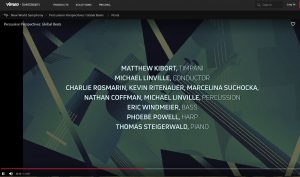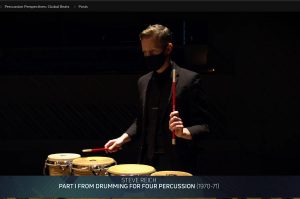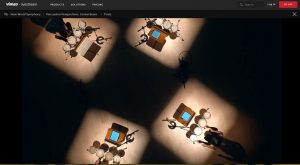Skizze des Ablaufs (JR)
Vorschau in Text und Bild von Marci Falvey / Ort: Concert Hall and Music School in Miami
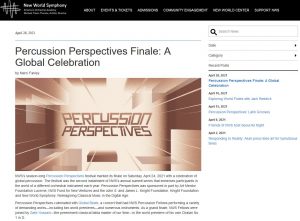 mehr davon HIER
mehr davon HIER
Der Livestream als Ganzes Hier
Leitfaden:
Vollständiger Programmablauf incl. Texte zu den Stücken HIER
Lou Harrison „Fifth Simfony“ (1939) ab 3:58
Alex Orfaly „Danzá Luna“ ab 25:35 (ab 21:36 Statement des Komp.)
Steve Reich „Drumming I“ ab 35:04 (Ansage) ab 37:09 (Aufführung)
Zakir Hussain ab 56:59 Gespräch mit Michael Tilson Thomas ab 1:00:01 „Chadan No.1“ Musik-Start auf der Bühne ab 1:04:41 Ende 1:17:07
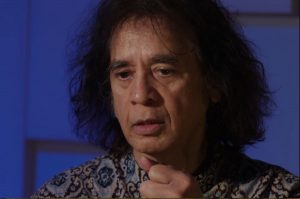 . . . . . .
. . . . . .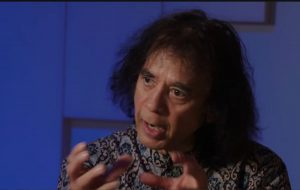 . . . . . .
. . . . . .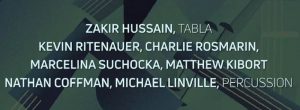 . . . . .
. . . . .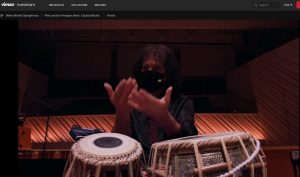
Kommentar Z.H.:
Chalan is a term in Indian music used to describe the improvised development of the characteristics of both a raag and a rhythm cycle. It also points to the salient feature (or face) of a raag known as pakkad. Every raag has a few landmark phrases with which the audience is familiar and, when arranged in the right order with improvisations spaced in between, the artist is able to draw the face of a raag. This process in a nutshell is known as chalan.
In the Indian rhythm repertoire, a tabla player sparsely uses some familiar patterns to draw a grid of a chosen rhythm cycle with a point identified from where the artist would slide right back into the grid. This said improvisation could be of one round of the rhythm cycle or as many as the performer chooses at the time, thus laying down a course to traverse through spontaneously. The length of the improvisation is similar to that of a jazz soloist taking one round around the course (changes) or as many as appropriate at that time. In this process, there is similarity between Indian music and Jazz.
Chalan No. 1 in D is laid out in the rhythm cycle (taal) of 16 beats; the name of this rhythm cycle is teentaal. In a solo rhythm performance in the Indian system, there is usually either sarangi (bowed) or harmonium used as instrumental accompaniment, known as nagma or lehra. The instrumental musician plays a composed melody of the same length as the rhythm cycle (taal) metronomically (like a bass line), keeping time for the tabla player and the audience. This is being performed here by the mallets; they also at points melodically amplify the patterns, thus signaling the arrival of the downbeat (the sum, first beat of the cycle).
The rest of the ensemble, after establishing the cycle with theka (the signature rhythm melody of 16) and reciting it for the benefit of the audience, uses various components of tabla repertoire like peshkar, to lay down the grid, and kaida (pre-composed theme) on which to improvise. They follow this up with gat and paran (fixed compositions). The tradition is to first recite these compositions to highlight their poetic beauty and grammar and then perform them, as the ensemble does here. Tihai (a phrase repeated three or nine times with or without space in between each repetition) is a frequently occurring feature used to arrive at the first beat of the cycle (the sum). The ensemble, after establishing the theka and peshkar theme then introduces various tihai’s before moving on to a kaida.
– Zakir Hussain
Mehr über „Chalan“ siehe hier. (Miles Shrewsbery)
(Ergänzung folgt)
Als Einübung zum Mitdenken der Lahara-Melodie könnte man sich den folgenden Artikel dieses Blogs vornehmen: HIER. Man sieht zugleich, wie nahe an der traditionellen indischen Tala-Lehre (nicht etwa an Kumar Bose!!) sich der Großmeister Zakir Hussain bewegt. Er wirft nichts über Bord, etwa zugunsten einer von der Moderne propagierten oder zumindest suggerierten Globalisierungs-Idee.
